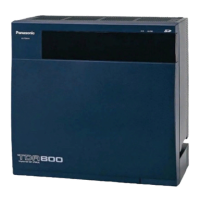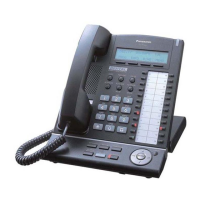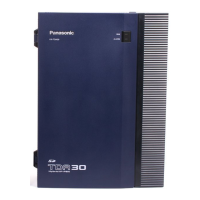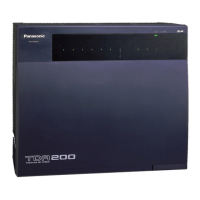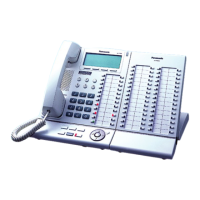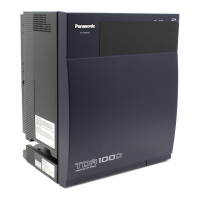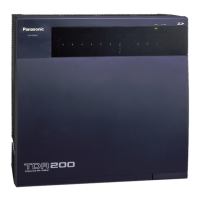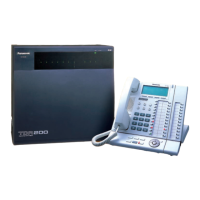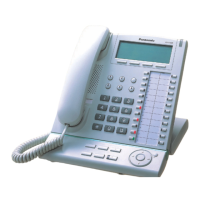1.13 P
232 Feature Manual
Conditions
• A CO line which is used for a private network should be assigned "Private" as the networking type.
(→ 1.9.10 INCOMING CALL FEATURES)
• To establish a QSIG network (→ 1.13.18 PRIVATE NETWORK FEATURES—QSIG), each ISDN
(QSIG) connection in a TIE line network must have the port on one PBX assigned as a master port,
and the port on the other PBX assigned as a slave port. PBXs that support this feature are the KX-TDE
series PBX and KX-TDA series PBX.
[TIE Line Network Connection Example]
• TIE Line Call by Own PBX Extension Number
TIE line calls can be made using your own PBX extension numbering scheme (1–64).
Explanation:
The PBX first searches local extensions for a matching number. If a dialed number is not found at the
local PBX, the call can then be sent to a remote PBX, and the remote PBX checks the TIE Line Routing
Table for a corresponding entry.
Case 1:
PBX-1
PBX-3
PBX-2
Extn.1000
:
Extn.1999
Extn. 2000
:
Extn. 2999
(A) Master
(B) Master
(C) Master
QSIG Network
(A) Slave
(C) Slave
(B) Slave
Extn. 3000
:
Extn. 3999
PBX-1
TIE Line
PBX-2
InterfaceInterface
Extn.1033
Extn.1011 Extn.1012
TIE Line Network
Outside Caller
CO Line
CO Line
Dials "123-4567".
Telephone Company
Destination: 1033
DID No.: 4567
Dials "1033".
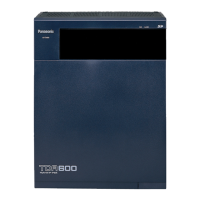
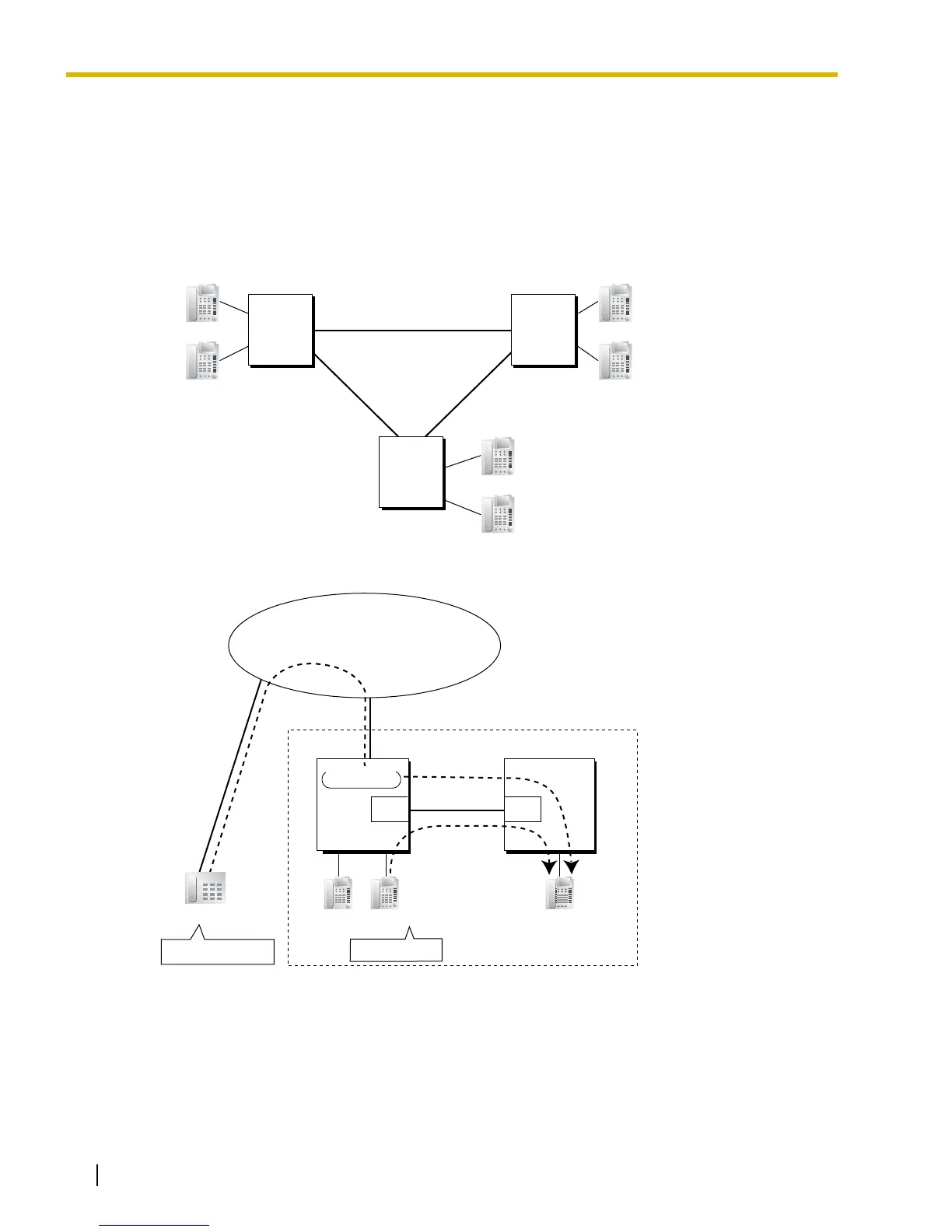